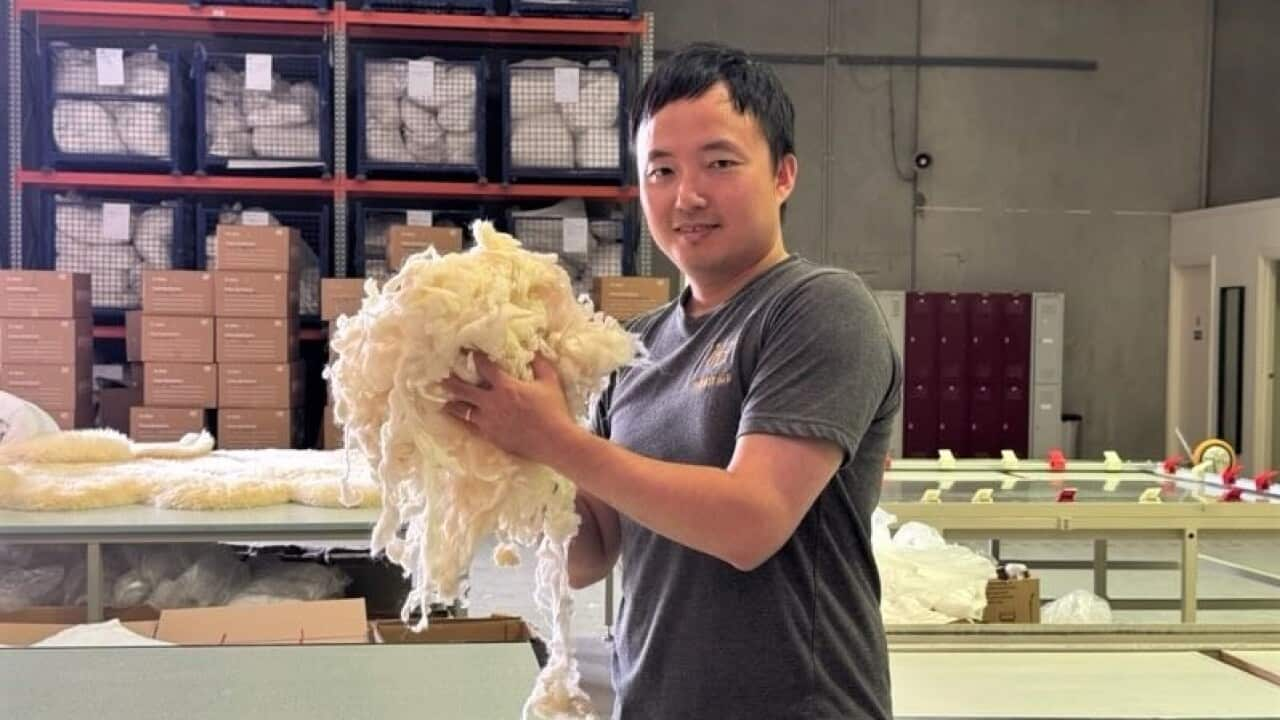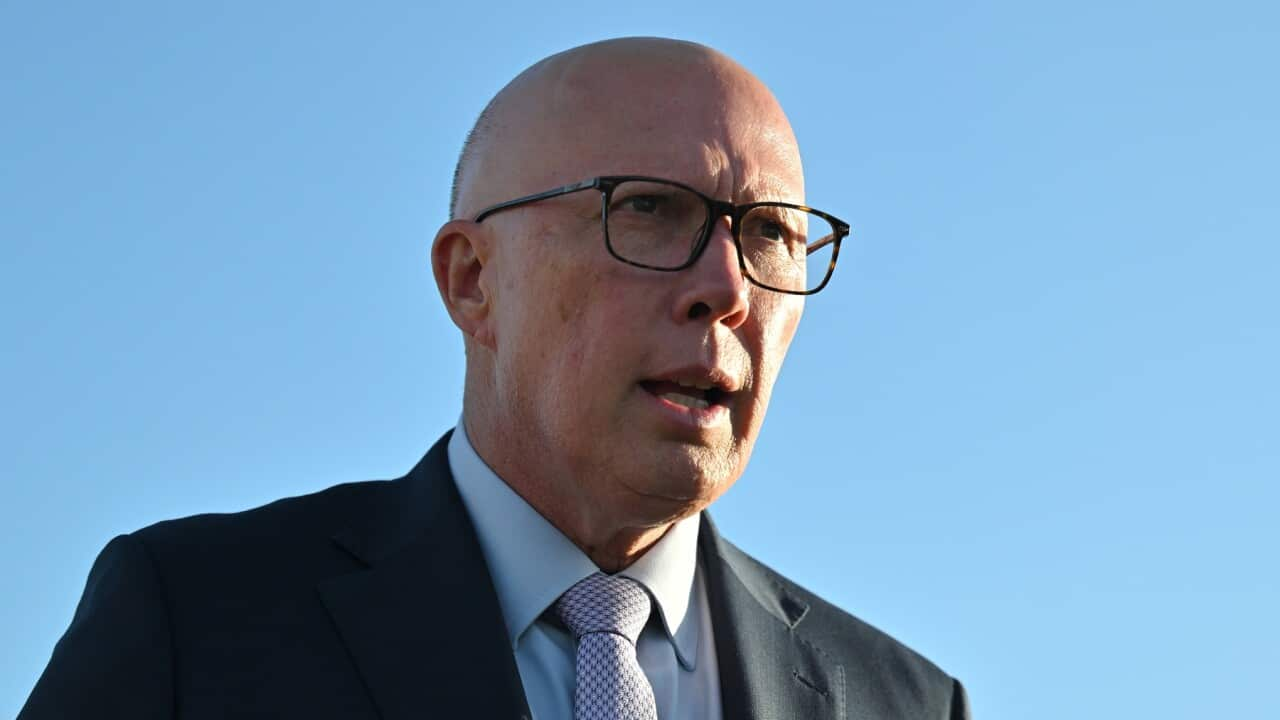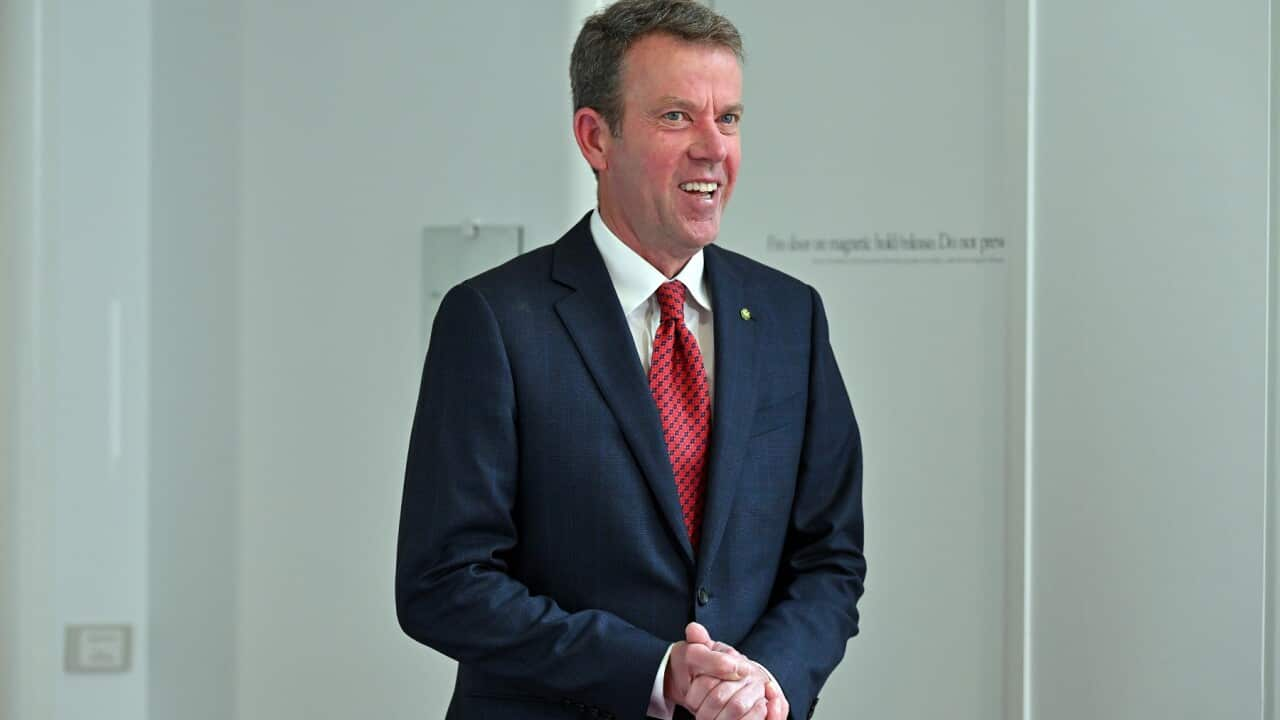TRANSCRIPT
Quilt making is in full swing at this factory in Melbourne.
Like most of the 60,000 woollen quilts produced each year, this one will be exported to China, as founder Clark Yu explains:
"Over 85 per cent of exports there to China because 1 billion people need quilts. I was originally from China so I saw how fast they developed."
Mr Yu was born in China’s northeast, where winter temperatures plunge below minus 20 and life is hard for many families.
"I'm not a crazy rich Chinese second generation. My parents worked in a state supported factory. They're workers, they're ordinary workers."
Australian wool is popular in China as a natural fibre, says Mr Yu because it breathes and keeps the bed warm in winter.
"Wool quilts, it's organic, healthy and the breathe pretty good. So, I think that's why Australian wools stand out for that reason and that's why we use Australian wool and manufacture them in local Australia."
Arriving in Australia in 2009 as a business management student, Mr Yu had little ‘hands on’ experience but says language skills have been key to his export success.
"I saw the big potential market back in China. But I didn't see much of a manufacturer trying to bring the Australian wool back to China. I think the main reason is the barriers of language and the culture. So that's why I take advantage of speaking Chinese."
Mr Yu’s business growth is good news at a time Australia’s wool industry is facing increasing challenges.
Lower wool prices are just part of the problem according to Gary Turner, chair of the Australian Wool Industries Secretariat.
"Over the past 10 years we've gone from a peak of about 160 million sheep being shorn in Australia down to about 40, 50 million - the lowest in a hundred years. And there's a number of reasons for that. Economic conditions around the world in more recent years have hit hard. And er, with the cost of living pressures that we've seen in the last few years together with the more casualisation of the workforce, not wearing suiting any more, people have started to think more and more about whether they need to buy that new jumper or that new jacket, or can they do with the one they've got for a while longer."
And that’s led to a growing number of wool producers turning to other industries like cropping which brings more consistent returns.
Still, Mr Turner says there is an upside.
"The good thing about Australian wool is we've got the best apparel wool in the world. China being the main buyer, they have to come to Australia to buy wool, to get the volume they require."
Even so, the total value of Australian wool exports fell by 12 per cent last financial year to $2.8 billion.
China remains the top export destination, but mainly for greasy wool as Mr Turner explains:
"We're exporting to China approximately 80 per cent of our total wool production. There's no manufacturing in Australia, so we export the greasy wool and they do all the processing and manufacturing there."
By using wool processed in Australia, Mr Yu is defying the trend.
And his business is growing rapidly.
In the seven years since he started, annual turnover has grown to almost $4 million.
"I do have three factories around Australia. So, one in Melbourne, one in Brisbane, and one in Adelaide. We keep doing innovation, we applied for a patent for, we call it ‘smart quilts’. So we have some chips, we attach them on the quilts so they can monitor a body like say heartbeats, blood pressure."
And while growing this startup has been hard, and lonely at times, Mr Yu hopes to do more:
"We are aiming to become the biggest Australian wool cross manufacturer and exporter. So that's our short-term goal."













